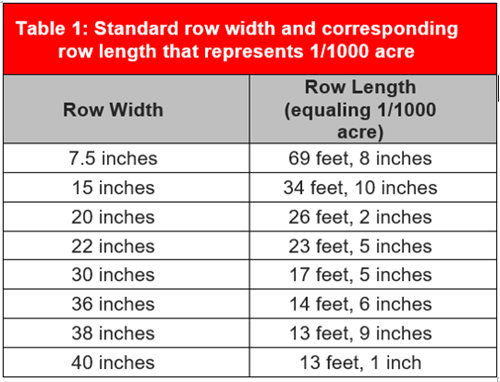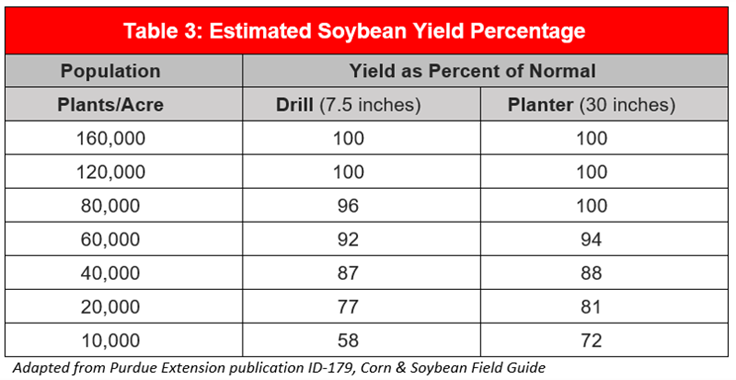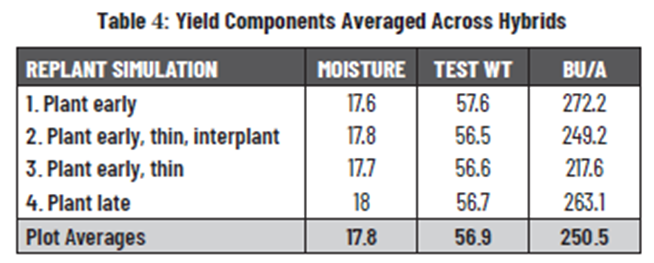Now is the Time to Walk Your Fields; Replant Considerations; Memorial Day Remembrance
BY Dairyland Seed Agronomy Team
CSI: CORN STAND INVESTIGATION OR CROP STAND INVESTIGATION
One of the agronomic activities I find really interesting is walking fields just after emergence. I am looking for missing corn seedlings, where one should be, or perhaps it’s a damaged plant. As a crop producer it may not be as satisfying. But for me, I enjoy the challenge of finding out why and what happened to the missing, sick, dead or dying plant. It is extremely difficult to evaluate why there was a skip in the row in October. So, just after planting is a great time to give those Red Wings or Wolverine boots a work out.
You’ll need a few items: a shovel or trowel (this time of year the smaller trowel is sufficient), pocket knife, tape measure, for drilled beans a hula hoop, a good reference like the Purdue Corn and Soybean Field Guide and something for recording information such as good old paper and pencil or say an iPad or smartphone. The techno version lets you record the coordinates exactly through GPS of where a certain issue may have been identified. I like to walk a W or V pattern through the field, but field dimensions and shape change that. The important thing is to try to reach all the major growing environments within that field -- for example clay knobs, poorly drained areas, old weedy patches etc.
What to look for? I want to know:
- Was it a seed quality issue, a planter issue, insect or disease? Some of these things we can control or minimize; others, well, we just can’t.
- First off, I want to know if a seed was actually there. If not, and there is a high frequency of missing seed, then we need to take a trip to the tool shed and take a peek at the planter.
- If there is a seed present, then I want to do the real CSI type stuff. Examine the seed or seedling and determine its demise. Was it a murderous insect consuming the life right out of the plant or a rotten plant disease?
- Or perhaps it was planting depth or soil conditions. I always get a little concerned when I can see a seed slot weeks after planting. Typically, that tells me it was a “little” wet at planting. This year that could be an issue as we are facing wet fields and the calendar says we need to be planting. Just remember the sins of planting last all year long. So, make a mistake early in the season, and you live with the consequences.
- Common pests to look for from an insect standpoint that attack seeds or seedlings are seed corn maggots, wireworms, white grubs and black cutworms. Many of these are controlled or suppressed through seed treatments and or seed traits. From a pathology standpoint we need to be concerned about seedling blights, especially during cold wet periods.
In summary, time spent walking fields at and soon after emergence may well identify a problem that can be corrected. If it is something than can’t be fixed this year, it may provide valuable information for next year’s crop. I strongly recommend recording this information so that you can better analyze this year’s issues and begin now to plan for improvement for next year.
REPLANT CONSIDERATIONS
Storms recently moved through the Dairyland footprint delivering sporadic rainfall amounts and temperature fluctuations right after planting. We are seeing areas with standing water and/or soil crusting. Some areas with soil crusting might be alleviated by using a rotary hoe but other areas could see stand reductions. Once the water recedes, be sure to give the crop a few days before you evaluate the stand so any emerging plants have a chance to come up. This will ensure a more accurate stand count to make replant decisions.
Determine Plant Population
To determine the population of the existing stand measure 1/1,000th of an acre by using the measurement in Table 1 that corresponds with your row width. Next, count the number of plants in the measured area and multiply that number by 1,000. Chose at least six representative locations across the field and average the populations to get the final plant population per acre.

Estimate Yield Loss from Stand Reduction
Using Table 2 for corn and Table 3 for soybeans, we can estimate yield loss from the stand reduction and decide if replanting is going to achieve a greater return on investment versus your current stand.


It is important to note that soybean plants will compensate for stand loss. Data from Dairyland Seed’s PAR Plots (Product and Agronomy Research) shows a stand count of 75,000 soybeans per acre is worth leaving alone. Common recommendations for soybeans is to replant if the stand is less than 50,000 plants per acre.
Agronomy Research and Demonstration Results
Each year Dairyland Seed conducts agronomic research and demonstration plots across our area called PAR Plots. One of these multi-year studies was conducted in Wabash, IN and looked at different corn replant scenarios and their impact on yield.
Corn Treatments:
- Early Plant Full Stand- Planted at 34,000
- Fill In- Full stand thinned to 18,000 and then interseeded with 18,000 seeds per acre
- Live With the Stand- Early plant thinned to 18,000 plants per acre and left alone
- Tear Up and Start Over- Early plant thinned to 18,000, worked up and replanted at 34,000
Results:


Conclusion:
In this third year of replant simulation, we see that doing nothing or living with a thin stand did not capture the maximum yield potential. In 2021 and 2020 we see that either interplanting or complete replant were better options than leaving the thin stand. All three years show a complete replant later to be the most beneficial. It is important to remember that these studies are a snap shot in time at one location and every year is different as shown by the tables. Making the decision to replant and how to go about it is difficult, this study was meant to put values to different replant treatments to help us make these decisions in the spring.
IT AIN’T ALL ABOUT HAMBURGERS AND HOT DOGS
For many, Memorial Day is the “kick off of summer” -- a three-day weekend and a time to gather for the backyard BBQ. For others, perhaps, it’s not as joyous for them as they remember a loved one who has passed.
As we remember all who have gone before us this upcoming weekend, let’s take special note of the origination of Memorial Day. Initially observed on May 30, 1868, and termed Decoration Day to honor those who lost their lives in the Civil War, it was made a national holiday in 1971.
Memorial Day is now in remembrance of all who lost their lives while serving our country. Take time to truly enjoy the weekend and the freedoms our fallen veterans fought to preserve. Certainly if we don’t, then perhaps we’ve done them a huge dishonor. Honor them at one of your local community remembrance ceremonies. Take a stroll through local cemeteries, visit the markers of those fallen veterans. Just take a moment to read their name and remember what they gave for us.
Finally, honor them as well by taking full advantage of the freedoms and opportunities afforded us by this great country. Have a Happy Memorial Day weekend. For further information on veterans and specifically Memorial Day visit https://www.va.gov/opa/speceven/memday/ .
 |
 |
 |
 |
 |
| Brian Weller Western Region 507.456.3034 |
Dan Ritter Central Region 219.863.0583 |
Branden Furseth Northern Region 608.513.4265 |
Mark Gibson Eastern Region 260.330.8968 |
Amanda Goffnett Eastern Region 989.400.3793 |
